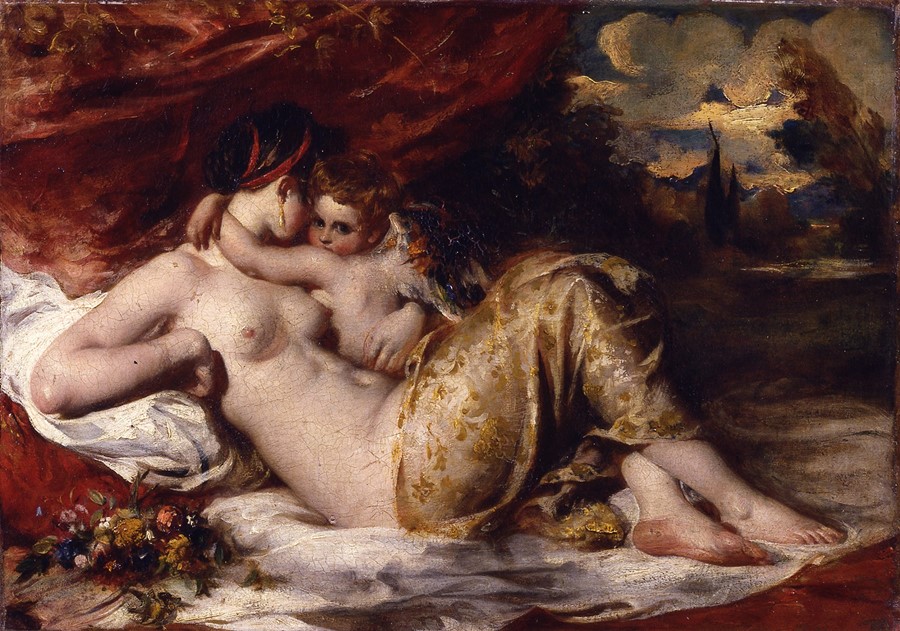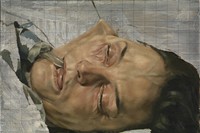From Sarah Lucas' sculptures to Jo Spence's breasts; a new exhibition at York Art Gallery examines the art world's longstanding obsession with the human body
Flesh, the soft mass of muscle and fat which lies beneath the skin, has long been a point of interest for artists – the folds of a belly, the curve of a buttock, the drape of an underarm inspiring paintings, photographs, sculptures and installations. As a subject matter it crosses cultures, crosses centuries… the make-up of the body uniting humanity. What better theme, then, for an art exhibition?
"The word 'flesh' is loaded with moral, religious and erotic undertones," says Laura Turner, curator of Flesh at York Art Gallery. "It is easy to understand why artists have been captivated by it and explored it as a theme in their work for hundreds of years." Including works from over six centuries (from Rubens to Sarah Lucas) the exhibition has been divided into four themes – Figuring Flesh, Still Life, Materiality and Surface – each a detailed exploration of how body mass is, and has been, represented, interpreted and perceived. What materials have artists used to depict flesh? Have new materials enabled new ways of representing it? How do we view our own bodies, our relationships with others and our experiences? These are just a few of the many questions the exhibition poses, says Turner.
Inspired by the York artist William Etty – "a controversial figure," Turner explains, "exiled from the artistic elite because of what was seen as a 'perverse' passion for the voluptuousness of the female nude" – Flesh was born out of a collaboration between York Art Gallery, The University of York and the Courtauld Institute of Art’s Dr Jo Applin, who is the exhibition’s co-curator. "Although there is a diversity in terms of subject and material," Turner says, "flesh as a substance is a theme that runs throughout the centuries – and I’m sure it will continue to do so." Here we look at ten of the artists featured.
William Etty (1787-1849) (above)
It was in the nude form that York artist William Etty’s interest lay, and the creation of large-scale history paintings, both classical and biblical, enabled him to explore it. Though accused of impropriety, he claimed his purpose was to ‘paint some great moral on the heart'. His first piece depicting nudes in a mythological context was The Coral Finder; displayed at the 1820 Summer Exhibition, it was later sold to a piano manufacturer for £30.
Featuring in Flesh is Petty’s Venus and Cupid, which depicts a naked Venus, cradling the winged cupid. Her face is turned away, leaving the viewer no option but to examine the circular swell of her breasts, and the muscle definition on her stomach.
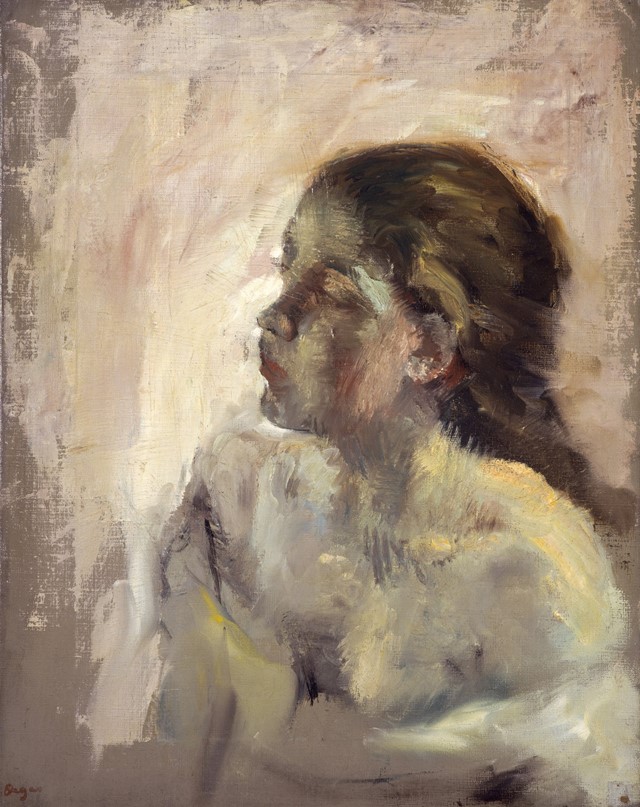
Hilaire-Germain-Edgar Degas (1834-1917)
Think Degas, think dancers. The French artist’s depictions of ballerinas are amongst his most famous works. Although credited as a founding member of the Impressionist movement, it was in fact, a label he disliked. What unified Impressionists was the desire to capture a precise moment in time, using colour and light to give the work a ‘live-ness’, but as Degas once said: "No art was ever less spontaneous than mine. What I do is the result of reflection and of the study of the great masters; of inspiration, spontaneity, temperament, I know nothing." A Study of a Girl’s Head on display in Flesh depicts a ballet dancer; her skin – her flesh – owes its tone to light and shade, in hues of yellow, pink and green.

John Stezaker (1949)
Conceptual artist Stezaker’s work centres on the exploration of the photograph and the forms it takes – as a factual image, for instance, or a recollection. His collages use images taken from vintage photographs, postcards, film magazines and the like, merged to retain the originals’ meaning but also creating a new image, putting forward a different interpretation.
Fall XIII combines the naked bodies of a man and a woman. Through it we see two different manifestations of flesh in black and white – the muscular physique of a male in shadow, and the ethereal white curves of a female in light. Together, they make up a whole, posing questions about masculinity and femininity inherent within an individual.
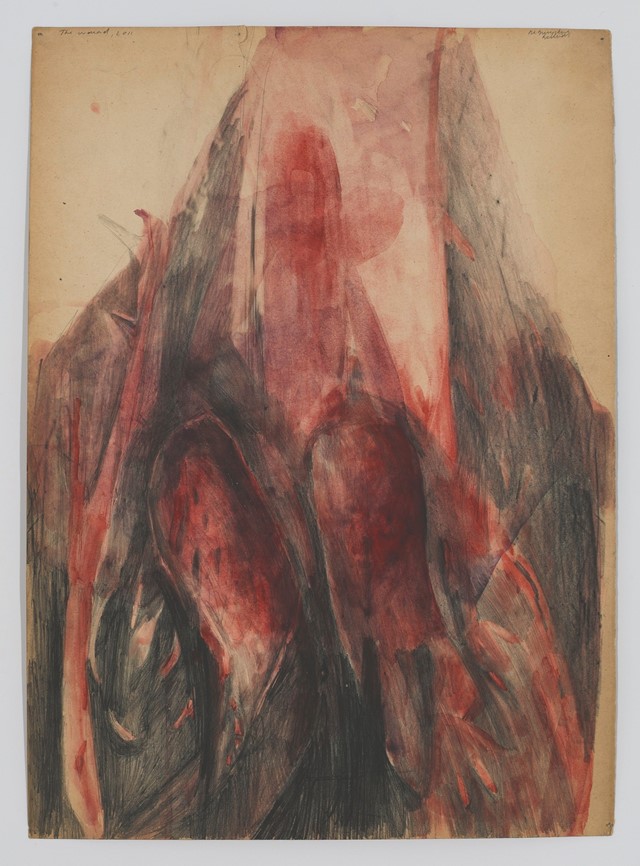
Berlinde De Bruyckere (1964)
Wood, horsehair, wax and wool – these are the materials of De Bruyckere’s sculptures and drawings. Her first works centred on the exploration of the human form, conspicuous through its absence – she displayed woollen blankets on racks onto which were sewn ribbons with the phrase "innocence can be hell". Her work has much to do with vulnerability. Later, she turned her attention to the human body, constructing deformed sculptures alluding to the body’s fragility – sexless so the form itself remained the focus.
The Wound is a painting that featured as part of De Bruyckere’s exhibition Into One-Another To P.P.P, an homage to the Italian filmmaker and painter Pier Paolo Pasolini who was murdered in 1975. Through De Byrchere’s painting we see flesh exposed, calling into play her signature themes of fragility and suffering.

Jonathan Yeo (1970-)
Studies of Cara Delevingne and Kevin Spacey as ‘President Underwood’ – it’s depictions of such figures in popular culture which have made Yeo one of the most sought-after portrait artists in Britain today. He rose to fame in 2007 when he created a college of George W Bush’s face after his official commission to paint the President was cancelled. The collage was constructed from images of porn.
Later works turned away from portraiture (in its conventional sense), towards images of people undergoing cosmetic surgery. "300 years ago, the portrait painter's job was to take people who looked a bit strange and fit them into a mould… Nowadays you don't have to do that: if anyone wants to look like Jordan, they can," Yeo told The Guardian in 2011. It’s the growing phenomenon of the surgery that has interested the artist.
Yeo has two pieces on display in Flesh, both taken from his Surgery series. The image pictured here, Extended SMAS (Superficial Musculo-Aponeurotic System), depicts a woman under sedation as her cheek is being lifted away from her face. It highlights the disturbing reality of cosmetic surgery, and the extent to which humans will go in their quest for lasting youth and beauty.
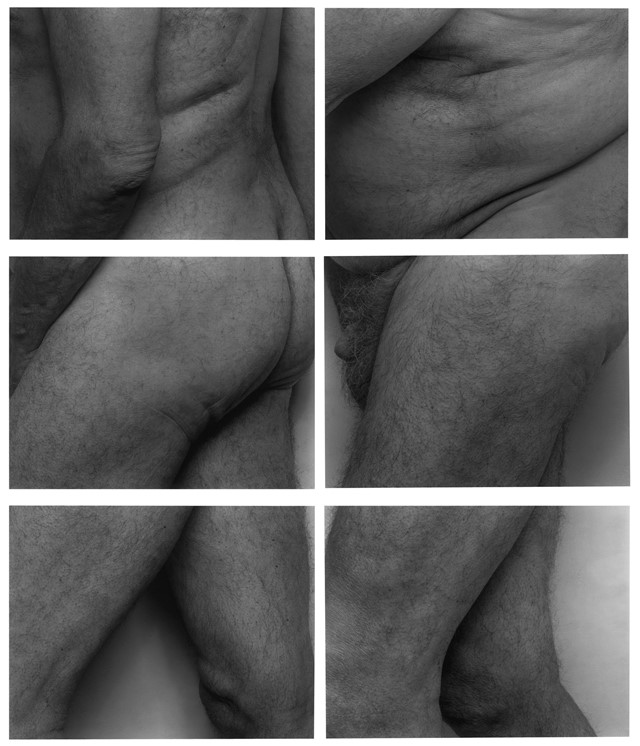
John Coplans (1920-2003)
Whilst Coplans studied painting, it was photography that was his favoured medium. His first photographs were taken in 1941, when he served in the King’s African Rifles in Ethiopia. Following his studies at art school in post-war London however, he went on to become a journalist. But he returned to art in his 60s, photographing images of his own aging body.
"To remove all references to my current identity, I leave out my head," he once said of his work. "I don’t know how it happens, but when I pose for one of these photographs, I become immersed in the past... I use no props; I pose against a neutral, white background, and before I know what has happened, I am lost in a reverie. I am somewhere else, another person, or a woman in another life." Frieze, No. 6 shows two images of a naked male form, one image standing behind the other, divided into two panels. Tenderly homoerotic, the positioning of the figures – almost curved into one other – suggests closeness, enhanced by sharp focus on the tangled bodily hairs.
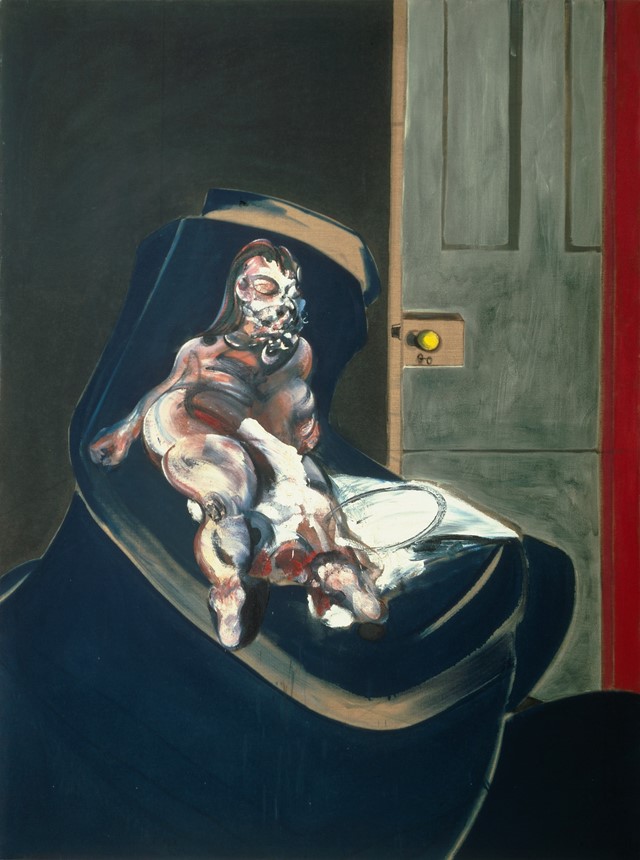
Francis Bacon (1909-1992)
"His abstract images of psychological and physical brutality made him one of the most exalted, and most disliked, artists of the post-war era," said the New York Times in their obituary of Francis Bacon. A self-taught artist, it was Bacon’s triptych Three Studies for Figures at the Base of a Crucifixion (1944) which launched his career. It was met with acclaim and horror; his disturbing surrealism stood in direct contrast to the optimistic spirit of post-war Britain.
During the 1960s, portraiture became Bacon’s focus; he liked painting people he knew well, and his sitters included friends such as Isabel Rawsthorne, Lucian Freud and George Dyer. Portrait of Henrietta Moraes on a Blue Couch, pictured above, was painted from a photograph; it depicts his friend, Henrietta, lying naked on a sofa. Her body shape is contorted, and her white, rose flesh is visible for all to see.
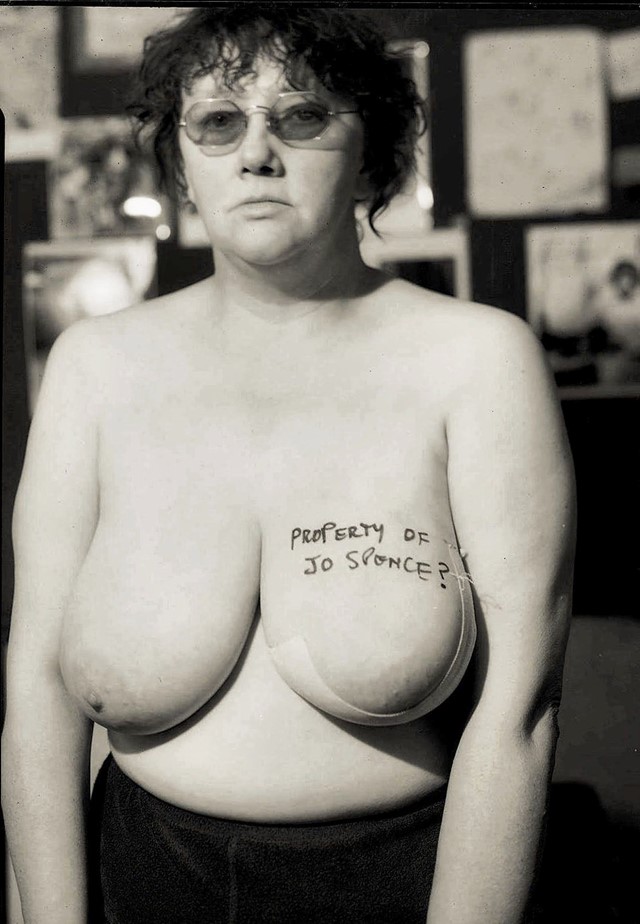
Jo Spence (1934-1992)
Inspired by Brecht, Spence liked the idea of teaching through photography. Starting out in commercial work, she moved onto portraits and weddings before honing in on documentary photography. Arguably her most significant body of work was her exhibition A Picture of Health?, through which she addressed her experience of breast cancer, the treatment and its results.
Jo Spence, A Picture of Health on display at Flesh is a self-portrait showing Spence naked from the waist up with the words "Property of Jo Spence?" written across her left, reconstructed breast. It calls into play questions of identity and ownership – who ‘owns’ Jo’s breast. Her? Or the surgeon who ‘sculpted’ it?
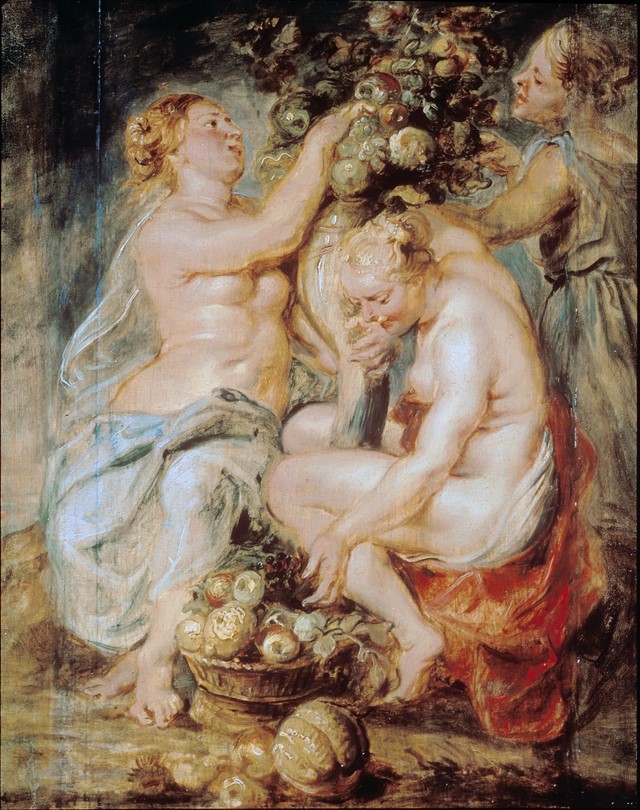
Peter Paul Rubens (1577-1640)
Flemish Baroque painter Peter Paul Rubens’ oeuvre encompasses portraits, altarpieces – he enjoyed working on a large scale – history paintings and in his later life, landscapes. He was incredibly successful throughout his lifetime, producing an unprecedented number of works – art historian Michael Jaffé attributed 1,403 – helped in part by a team of assistants. In July this year, his painting Lot and His Daughters sold for £44.8 million at Christies – the most expensive Old Master ever sold at the auction house.
There is much flesh on display in Ceres and Two Nymphs with a Cornucopia shown in Flesh. Inspired by Ovid’s mythological tales, it depicts Ceres, the Goddess of Grain and Agriculture, holding a cornucopia, symbolising abundance. The flesh of Ceres and the left nymph is in abundance too – with curves of pink, highlighted by reflections of light, in gold.
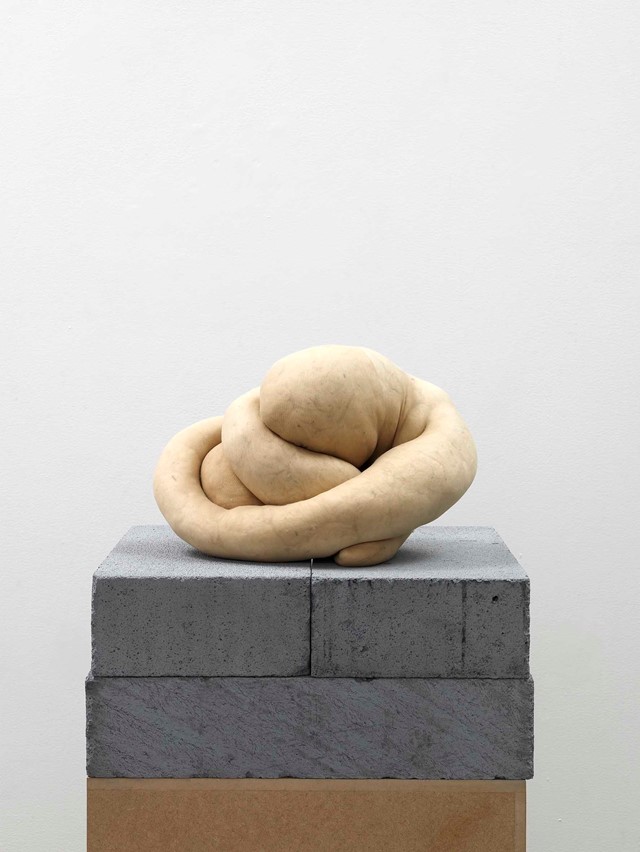
Sarah Lucas (1962-)
YBA Sarah Lucas is an English sculptor, installation artist and photographer. Bawdiness and eroticism lie at the core of Lucas’ work; it was her show at gallery City Racing in Kennington entitled Penis Nailed to a Board that put her on the map.
She rose to prominence in the 1990s, at one point selling her work through a rented retail space dubbed 'The Shop' with fellow YBA Tracey Emin. There, the pair were renowned for their wild parties and customised merchandise – T-shirts branded ‘I’m So Fucky’ and ashtrays of Damien Hirst’s face.
NUD 4 on display in Flesh was created as part of a series of NUDS (Nudes? Duds? Lucas loves wordplay). They are sculptures made of stuffed nylon tights, shaped by wire into abstract, intestine-like forms. Speaking about tights as a material, Lucas once said: "there [is] something so human about them… something quite sexy". Both attributes can be identified here.
Flesh runs from September 23, 2016 until March 19, 2017 at York Art Gallery.
